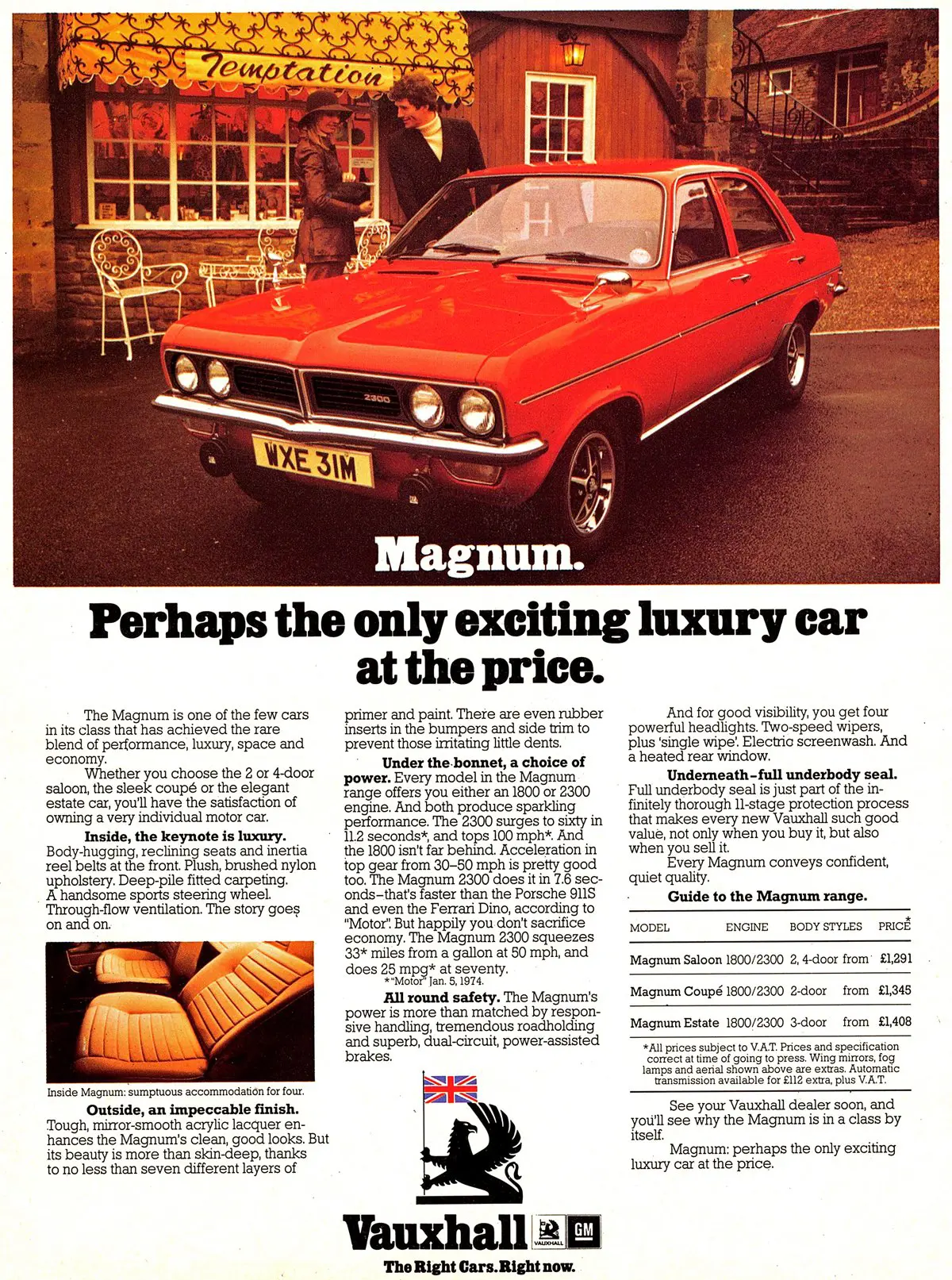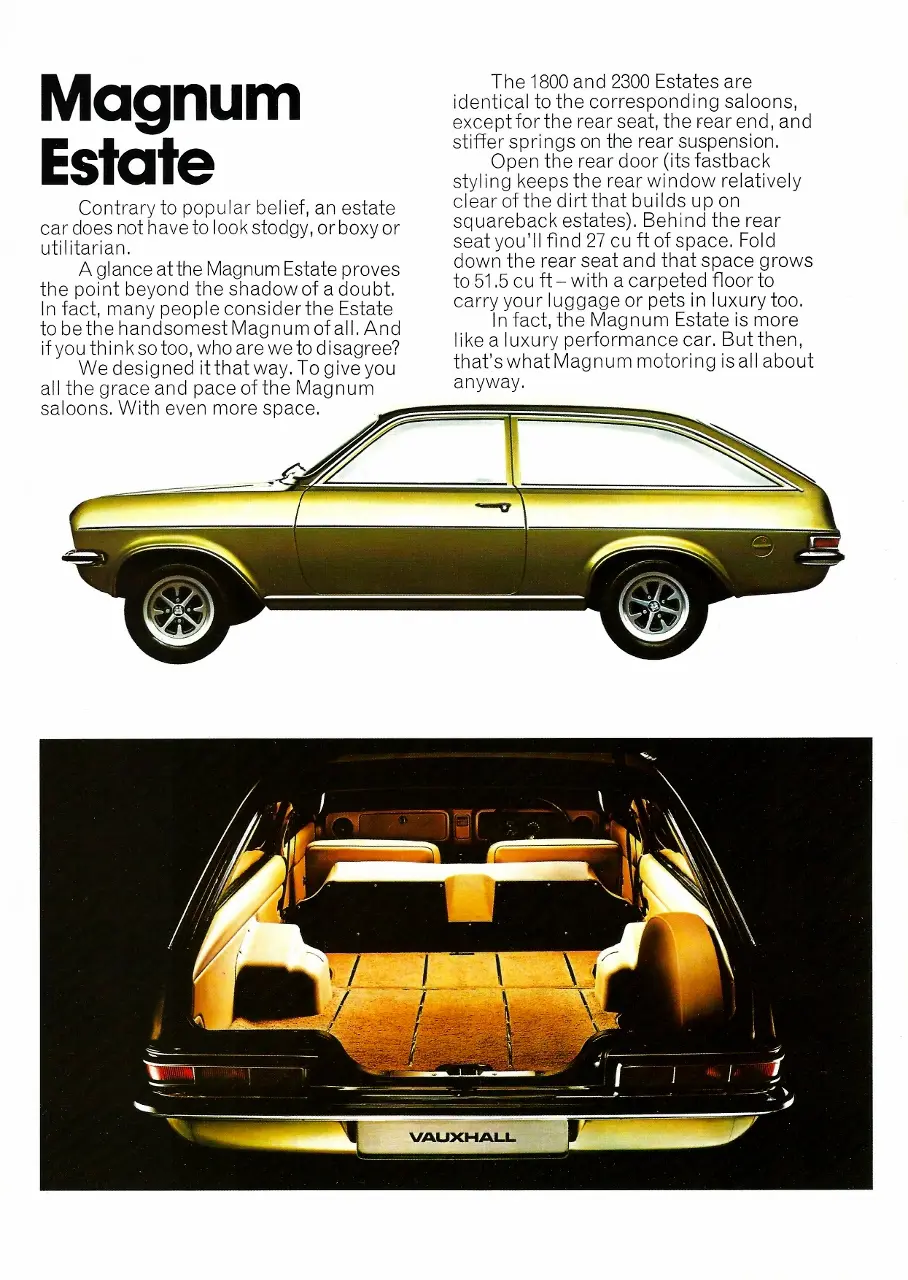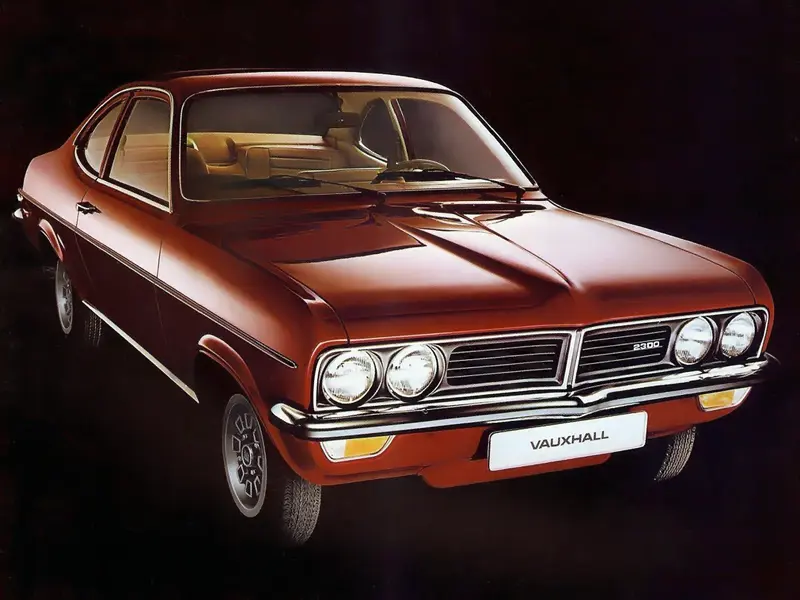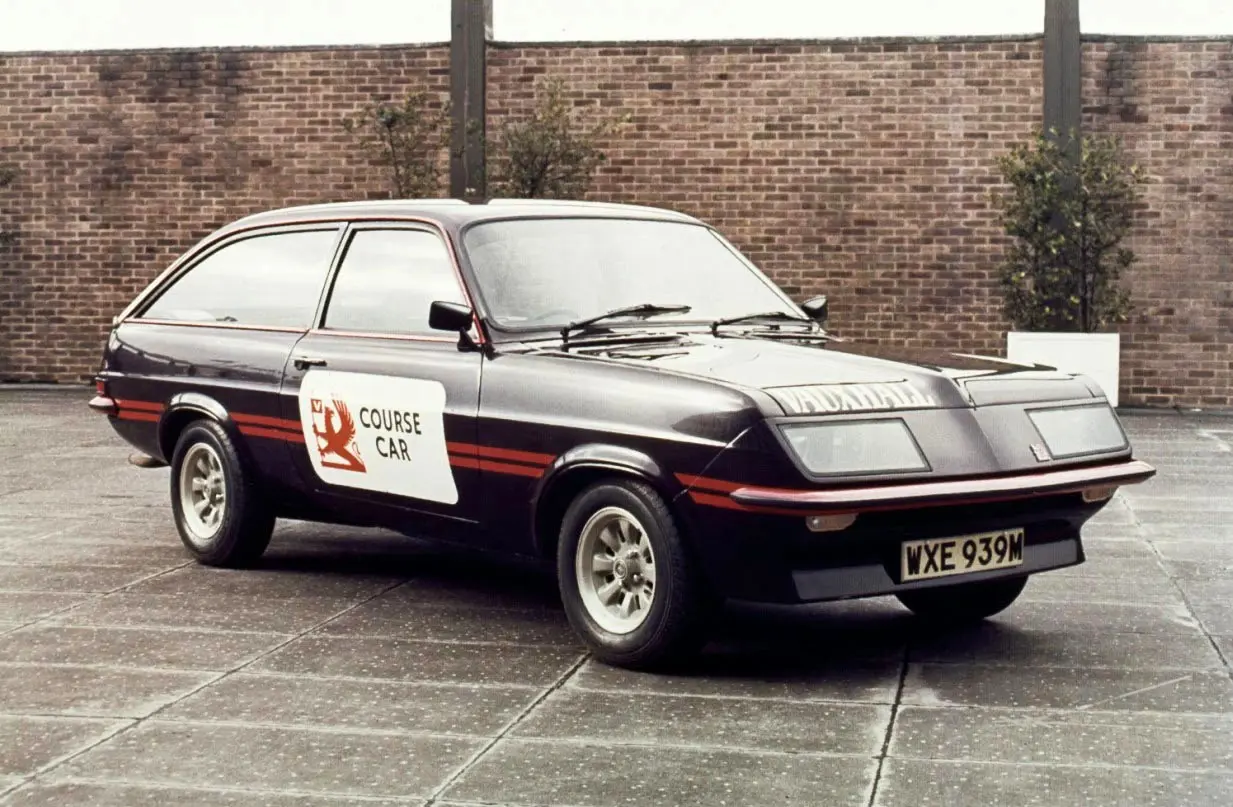THE VAUXHALL MAGNUM – A CELEBRATION
13 May 2022
Last year we celebrated the fiftieth birthday of the Firenza, which neatly brings us to the 1973 revision of the Vauxhall’s HC family. The entire range was one of remarkable complexity, so by September of that year, the larger engine versions of the Viva saloon and estate were now known as the Magnum. The same applied to all coupes bar the newly launched HP “Droopsnoot”, more of which in another blog.

Vauxhall aimed their new model at the sort of motorist who might have considered a Cortina 2000XL Mk. III or a midrange Capri. “Magnum is a beautifully designed and coordinated machine that is everything a personal car should be; a unique blend of aesthetics, luxury and pure handling genius”, stated one notable gem of sales copy. The message to the potential buyer was quite clear; purchase this Vauxhall, and you will be able to look down on any neighbour who owned a Ford.
Fortunately, the Magnum was a very attractive machine. The quad headlamps and Ro–Style wheels nicely augmented the HC’s lines, and Luton also refined the engine and transmission and upgraded the suspension. The cabins were well-trimmed, and even the entry-level 1.8 featured nylon cloth upholstery. As for the flagship 2300, it sported new fewer than seven instruments and looked as up-to-the minute as a pair of crimplene flared trousers.

Fleet buyers were a vital consideration for Vauxhall, and they promoted the Magnum as “appealing to the senior representative and management classes of company car users”. Fortunately, Motor found the four-door 2300 to be “a pleasant, almost viceless car” and Autocar thought it “a handy–size car with good manners and a really impressive turn of speed”. Such reports must have been music to the ears of Luton’s sales department.
Meanwhile, the great L J K Setright of Car magazine thought the Estate “very impressive” on an elaborate test drive from Istanbul to Portugal. He also stated the upmarket HC was as though “the phoenix had arisen from its pyre a better and more evolved bird than in previous incarnations. The Magnum is the old big–engineed Viva with all the mistakes we found rectified”.

This was high praise indeed, for Vauxhall now had a worthy competitor for the likes of the Triumph Dolomite. In 1974 Car regarded the 2300 Estate superior to the Capri 1600 GT Mk. II “as a sporting machine, and as a practical vehicle”. The debut of the Cavalier in the following year made the Magnum’s position seem faintly superfluous, but Luton treated the older model to a facelift. The Coupe was discontinued, but the saloons and the estates gained improved equipment levels and more power.

1976 saw marked the final hurrah for the range in the form of the Sportshatch; the 2300 Estate finished in ‘Extra Dark Wine’ combined with the HP’s nose and wheels. Vauxhall displayed a Firenza–badged prototype at the 1974 Motor Show to gauge the potential market, but potential buyers had to wait another 19 months. The Sportshatch was sold as a Magnum, with publicity via a fleet of high–profile dealer demonstrators. Just 195 examples left Ellesmere Port.
Production of the standard versions ceased in December 1977, although sales continued into 1978. Survivors are now very scarce, and the Magnum deserves to be remembered as a car that maintained Vauxhall’s profile during a very challenging period. And there can be few more ultra–1970s Britsh cars than a 2300 saloon in ‘Volcano Red’ with ‘Deerskin’ upholstery.
